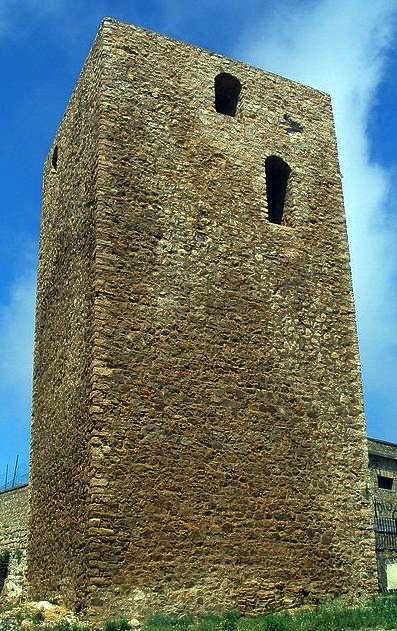Pollina

Pollina is first recorded in 1081 when it was a hamlet
within the diocese of Troina, while in 1131 it was placed within the
bishopric of Cefalu. Six years later in 1137 the land of Pollae
was recorded as being held by Roberto Montescaglioso. Presumably
this Robert was the brother-in-law of Emily Macabeo (d.1119/24), the
widow of Count Ralph Macabeo of Montescaglioso (d.1108/15) and half
sister of King Roger (d.1155). The foundation of the diocese of Cefalu
in 1131 caused many problems concerning the boundaries of the new see
and in 1159 Pollina was repeatedly mentioned when an attempt was made
to clearly define the boundaries between the bishopric of Patti-Lipari
and Cefalu. Finally in 1171, Pope Alexander III definitively
granted the hamlet of Polla/Pollenam to Cefalu.
Robert Montescaglioso, the grandson of the Robert presumably holding
the castle in 1137, died before 1167 and presumably the castle reverted
to the Crown. Over 30 years later Pope Innocent III, as guardian
for Frederick II (d.1250), gave to the church of Cefalu‘the
castle of Pollina with the tenements and appurtenances of
the same'. Over 100 years later on 5 September 1321 Count
Francesco Ventimiglia of Geraci (d.1338), exchanged the hamlet and
presumably the castle with Bishop Giacomo Narneja of Cefalu
for the fees of Ferminino and Veneruso. The reason for the
exchange was that the bishop could no longer afford the upkeep of the
site, the repair of the stone walls were too much for his finances even
though the income from the lordship was ‘perhaps 30 or 40 gold
ounces or even more'. As late
as 1558 Pollina was regarded as a fortified centre in the hinterland of
Palermo.
Description
The castle lies at the highest point of the town on a rocky triangular
crag some 2,500' above sea level. The site is much disturbed by a
modern amphitheatre and other works. The rhomboid tower,
interpreted as a keep, is about 28' square and some 45' high.
Entered from the west it is windowless in its lower vaulted floor, but
the upper 2 storeys have lights to the north, south and east. The
west wall has
largely collapsed, but the whole tower has had a thorough recent
overhaul. The repaired windows are all Romanesque, but it is
uncertain that this is their medieval form. The keep seems to
have been the southeast corner tower of a small polygonal enclosure
about 100' east to west and 65' north to south. Little remains of
this but fragments of the
north wall built on and below the cliff with traces of projecting
towers. To the east of the keep was a curtain cutting off the
town and making a long, some 200' north to south, but narrow, some 50'
east to west, outer
ward. This battlemented ward has been much rebuilt, but seems to
have an original gateway to the northeast, leading down into the
town.
The wallwalk above this, with 2 surviving merlons, may just be
original, although they have been heavily restored.
Why not join me at other Sicilian castles?
Information on this and other tours can be found at Scholarly
Sojourns.
Copyright©2019
Paul Martin Remfry

